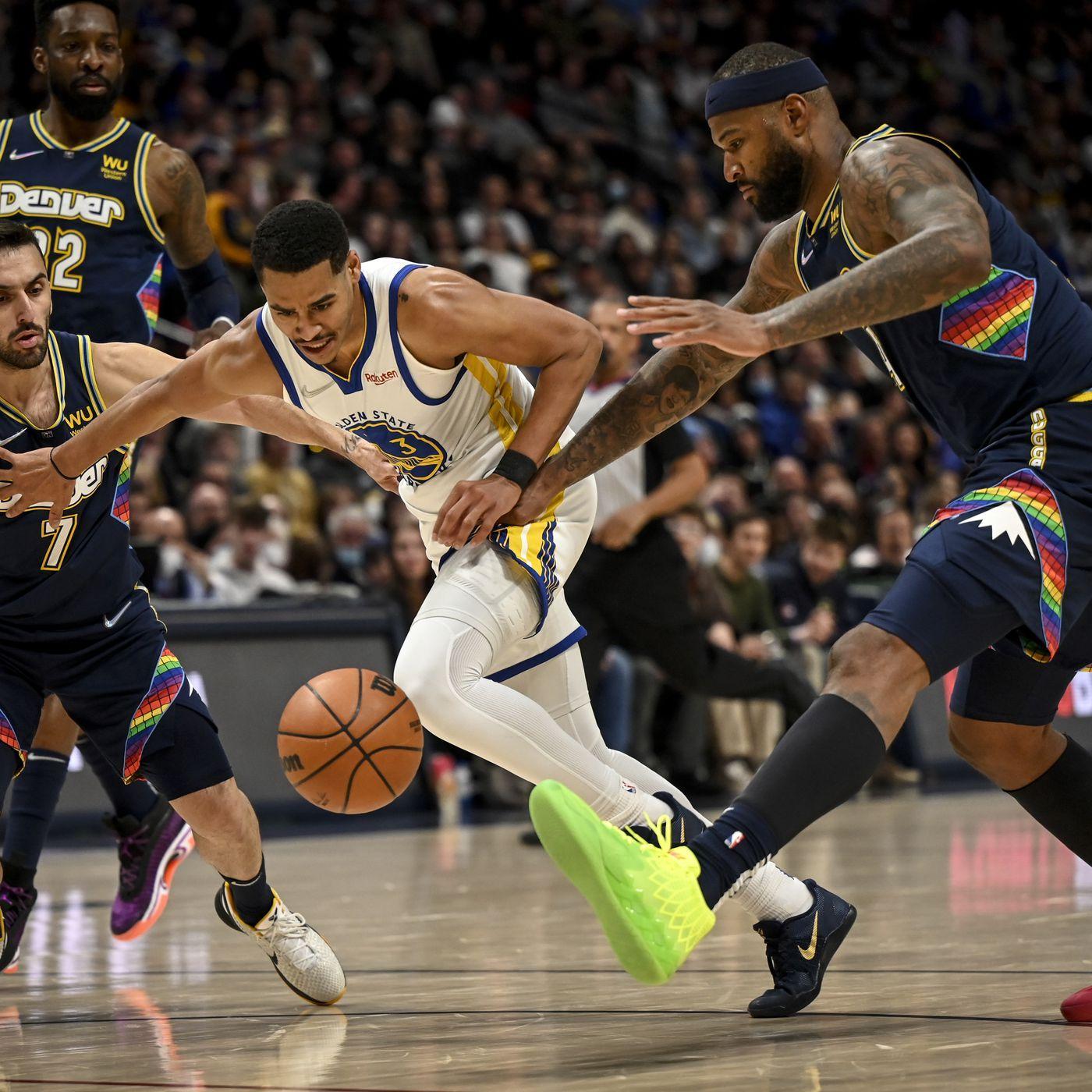Welcome to the dynamic world of NBA basketball, where every play is a strategic dance between offence and defence. Amidst the fast-paced action on the hardwood, two tactical fouls often come into play, adding an extra layer of complexity to the game: the take foul and the clear path foul. Imagine this as a chess match on the court, where defenders strategically use these fouls to thwart scoring opportunities. But, what sets a “transition take foul” apart from a clear path foul? Let’s unravel the intricacies and dive into the contrasting nuances of these two fouls to understand how they shape the flow and drama of NBA gameplay.
What Exactly Does the Term ‘Transition Take Foul’ Mean in the Context of NBA Basketball?

Image credit – Gold State of Mind
In the NBA, a defensive player’s calculated foul to prevent the other team from scoring during a fast-break scenario is referred to as a “transition take foul”. The other team may attempt to swiftly move the ball up the court to score before the defence can line up after a team loses control of the ball or misses a shot.
To halt the fast break and allow their team time to reorganise defensively, a defensive player may intentionally foul an offensive player in such circumstances. This strategy is often used when there is a numerical disadvantage for the defensive team. By forcing the offensive team to inbound the ball from the sideline or baseline, the player who committed the foul hopes to prevent an easy basket.
It’s important to foul before the offensive player enters a scoring position, and this is often seen as a planned manoeuvre to impede the game’s progression and lessen the potential harm of a fast break. However, using deliberate fouls excessively or in an unsportsmanlike manner may result in further penalties or free throws.
What Defines a Clear Path Foul in the NBA?

Image credit – The Sports Rush
In the NBA, a particular kind of foul known as a “clear path foul” is committed during a transition when it prevents an offensive player from having an uncontested shot at the goal. Clear route foul regulations were put in place to deter deliberate fouls that provide an attacking player no clear path to the basket. Below are the essential components and standards for a clear path foul:
1. Location on the Court: The foul must happen at the midcourt line or in the backcourt while the ball is in play.
2. Possession and Control: Either the offensive player must release a pass to that player, or the offensive player must be in possession and control of the ball.
3. No Defender Between the Offensive Player and the Basket: The offensive player and the basket shouldn’t have a defender in between them.
4. Clear Path to the Basket: The attacking player’s path to the basket cannot be unobstructed by the foul.
The attacking team receives possession of the ball and free throws if these conditions are satisfied, and a clear path foul is called. Whether the foul was an intentional clear route foul or a personal foul determines how many free throws are awarded.
Personal Foul: When a defender fouls in a clear route during a regular basketball play a foul that is not intentional, the offensive player is given two free throws and the ball stays with the team.
Clear Path International Foul: The attacking player receives two free throws and the team gains control of the ball at the moment of interruption if it is determined that the foul was committed intentionally in an effort to halt the fast break and prevent the scoring chance.
Clear route fouls encourage an open and thrilling style of play by discouraging defenders from purposefully fouling in transition situations to stop an easy score.
What’s the difference between a take foul and a clear path foul in the NBA?
Although defensive players intentionally commit fouls in both “transition take foul” and clear way fouls, they happen in different situations and have separate NBA regulations and penalties.
1. Take Foul:
– Context: A take foul is often committed when the side on defence is attempting to stop the other team from scoring during a fast-break.
– Goal: The main objective of a take foul is to impede the attacking team’s fast-break chance and slow down the game’s tempo.
– Time: It may happen anywhere on the floor, and often the foul is committed before the attacking player is in a position to score.
– Results: Usually, the attacking team gets to make free throws, but they may also inbound the ball from the baseline or sideline to continue the game. The specifics of the foul may affect how many free throws are awarded.
2. Clear Path Foul:
– Context: Preventing an attacking player from having an uncontested chance to score is the particular kind of foul that happens during transitions.
– Goal: A clear route foul is intended to discourage deliberate fouls that take away an attacking player’s clear access to the basket.
– Time: Specifically, it happens when the attacking player has a clean route to the basket and the ball is in the backcourt or at the midcourt line.
– Results: At the time of interruption, the team receives control of the ball and the offensive player is given the opportunity to shoot free throws. Whether a foul is an intentional clear route foul or a personal foul determines how many free throws are awarded.
Conclusion
The “transition take foul” and clear route foul are two tactical moves that may change the course of a game in the dynamic world of NBA basketball. We revealed the chess-like tactics at work when we broke down their distinctions, where defenders deliberately use these infractions to get around the hectic tempo of the game.
The game takes on a delicate balance between offensive and defence with each intentional foul, which intrigues both spectators and commentators. Therefore, pay attention to these strategic fouls the next time you watch a game; they’re more than simply whistles; they’re deliberate movements in the complex dance of NBA basketball.

